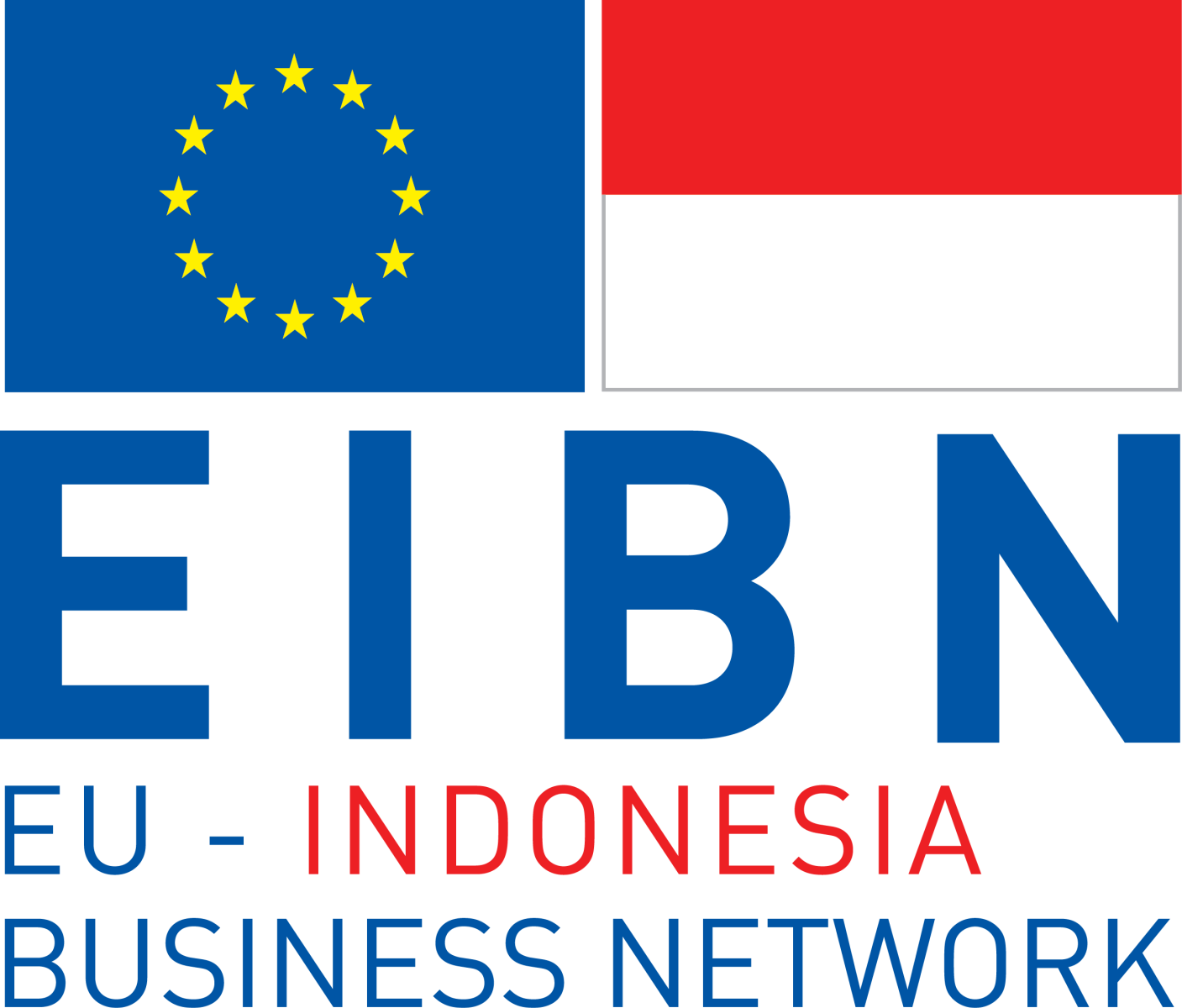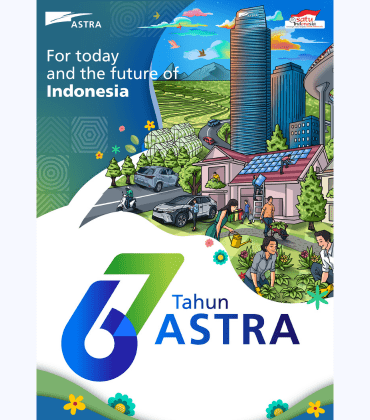Indonesia possesses a wealth of mineral resources. Compared to global reserves, the country ranks first in nickel, second in tin, fourth in both bauxite and gold, seventh in coal, and eighth in copper. It is home to thousands of mining companies that adhere to world-class safety and environmental standards, supported by an abundance of cost-effective labor. In recent years, the government has introduced competitive tax incentives for companies engaged in developing downstream industries to process extracted raw materials.
This mineral wealth is reflected in the sector’s contribution to the national economy. In 2024, the mining sector accounted for 6.92 percent of Indonesia’s GDP and ranked as the second-largest contributor to national exports, making up 17 percent (USD 46.1 billion), just behind industrial exports. In recent years, the sector has strengthened its position as a strategic pillar of the national economy and continues to play a key role in wealth distribution.
One of the most transformative developments has been in nickel production, which has surged in response to the global shift toward electric vehicles (EVs). EV adoption jumped from just 1 million users in 2017 to over 10 million by 2022, driving unprecedented demand for nickel, a critical component in EV batteries. Indonesia, holding the world’s largest nickel reserves – estimated at 5.2 billion metric tons – and producing more than half of global supply, plays a pivotal role in meeting this demand. Nickel exports soared from USD 3 billion in 2019 to USD 33 billion by 2023, while the downstream development strategy has spurred significant growth in resource-rich regions such as North Maluku and Central Sulawesi. These areas have seen industrial hubs emerge, with employment and local GDP posting double-digit growth.
At the same time, Indonesia’s mining industry is among the most heavily regulated. The primary legal framework is Law No. 3/2020 on Mineral and Coal Mining, also known as the Minerba Law, which governs licensing, mandates foreign shareholder divestment, as well as government and community involvement in mining operations. As is common in Indonesian bureaucracy, a number of implementing regulations have been issued to clarify and amend the law, such as Government Regulation No. 96/2021 and Government Regulation No. 25/2024, which aim to streamline regulatory processes, enhance efficiency, and bolster legal certainty.
Unsurprisingly, Indonesia is becoming increasingly attractive as an investment destination. According to the Canada-based Fraser Institute, the country scored 62.90 on the Investment Attractiveness Index in 2024, ranking 36th out of 82 jurisdictions – an improvement from a score of 44.32 and a 74th ranking in 2020. Similarly, its Policy Perception Index (PPI) ranking rose to 41st in 2024, up from 69th in 2020.
With abundant resources, rising nickel demand, and an increasingly attractive investment climate, Indonesia’s mining sector is set to remain a cornerstone of economic strategy – provided it can navigate the challenges of inclusivity and sustainability in the years ahead.
| HIGHLIGHTS |
Indonesia’s Mineral Reserves and Share of Global Production (2024)
Source: United States Geological Survey, 2024 and the Indonesian Ministry of Energy and Mineral Resources, 2024
|
Mineral |
Reserves (in metric tons) |
Share of global production (%) |
|
Nickel |
55 million |
59.45 |
|
Tin |
45,000 |
16 |
|
Gold |
3,600 |
3.03 |
|
Bauxite |
2.8 billion |
7.11 |
|
Coal |
31.96 billion |
9 |
|
Copper |
21 million |
4.78 |
Indonesia has some of the world’s largest mineral reserves and is a key player in the industry.
Domestic Coal Utilization 2020–2024 (in Million Tons)
Source: Indonesian Ministry of Energy and Mineral Resources, 2024
|
Category |
2020 |
2021 |
2022 |
2023 |
2024 |
|
Export |
564 |
614 |
687 |
695 |
775 |
|
DMO |
132 |
133 |
216 |
177 |
213 |
|
Production |
405 |
435 |
465 |
518 |
518 |
Indonesia, the world’s largest coal exporter, has 31.96 billion metric tons in reserves. From 2020 to 2024, export volumes grew from 564 to 775 million tons, while domestic market obligation (DMO) rose modestly. Production climbed steadily, highlighting strong demand globally and regionally despite growing energy transition discussions.
Indonesia’s Investment Attractiveness Ranking
Source: Fraser Institute, 2024
|
Year |
Policy Perception Index (Rank / Jurisdiction) |
Investment Attractiveness Index (Rank / Jurisdiction) |
|||||||||||||||||||||||||||||||||||||||||||||||||||||||||||||||||||||||||||||||||||||||||||||||||||
|
2024 |
41 / 82 |
36 / 82 |
|||||||||||||||||||||||||||||||||||||||||||||||||||||||||||||||||||||||||||||||||||||||||||||||||||
|
2023 |
72 / 86 |
56 / 86 |
|||||||||||||||||||||||||||||||||||||||||||||||||||||||||||||||||||||||||||||||||||||||||||||||||||
|
2022 |
** |
** |
|||||||||||||||||||||||||||||||||||||||||||||||||||||||||||||||||||||||||||||||||||||||||||||||||||
|
2021 |
72 / 84 |
50 / 84 |
|||||||||||||||||||||||||||||||||||||||||||||||||||||||||||||||||||||||||||||||||||||||||||||||||||
|
2020 |
69 / 77 |
74 / 77 |
|||||||||||||||||||||||||||||||||||||||||||||||||||||||||||||||||||||||||||||||||||||||||||||||||||
Indonesia is gaining appeal as a mining investment destination. According to Fraser Institute, its Investment Attractiveness Index ranking improved from 74th in 2020 to 36th in 2024, while its Policy Perception Index rose from 69th to 41st, signaling stronger regulatory confidence and growing investor interest in the mining sector.
| CHALLENGES |
Since the enactment of Minerba Law No. 3/2020, Indonesia’s mining sector has undergone significant regulatory changes intended to strengthen state control, increase value-added processing, and ensure resource sustainability. While these reforms bring long-term opportunities, they also present ongoing challenges for businesses and investors.
-
Complex regulatory framework
Although Law No. 3/2020 centralized licensing under the Ministry of Energy and Mineral Resources (MEMR), the sheer volume of implementing regulations – such as GR 96/2021, GR 25/2024, and upcoming MEMR decrees – creates uncertainty. Investors must navigate multiple compliance layers for licensing (IUP, IUPK), extensions, and reserve-fund obligations.
-
Contract continuity and obligations
Contracts of Work (CoW) and Coal Contracts of Work (CCoW) holders can convert to Special Mining Business Licenses (IUPK), but this comes with strict conditions, including domestic processing, reserve-fund establishment, and adherence to production plans (RKAB). These requirements add operational and financial pressure.
-
Mandatory domestic market supply
The Domestic Market Obligation (DMO) remains firmly enforced and is being strengthened. Mining companies must allocate a significant portion of coal and mineral output to domestic industries before export, which can affect revenue projections when domestic pricing is lower than international benchmarks.
-
Foreign divestment rules
The 51% divestment obligation for foreign investors persists, albeit without a clear timeline in the law. This creates ambiguity for long-term ownership strategies and valuation of assets, especially in large-scale operations.
-
Downstream processing mandate
The continued ban on raw mineral exports and emphasis on domestic smelting add to capital expenditure burdens. Companies unable to meet processing requirements risk losing export rights, which can disrupt cash flow.
These issues illustrate a persistent tension between Indonesia’s resource-nationalism policies and investor confidence. While the government aims to create a more sustainable and value-driven sector, the regulatory complexity, and evolving policy landscape remain key risks for mining firms and investors.
| CONCLUSION |
Mining remains a capital-intensive industry that requires years of investment before turning a profit. While Indonesia is consistently rated highly for its mineral wealth, regulatory complexity has historically been a barrier. However, recent reforms indicate a shift toward greater legal certainty and investor confidence.
The enactment of Minerba Law No. 3/2020 and its implementing regulations – such as Government Regulation No. 96/2021 and No. 25/2024 – represent a significant effort to streamline licensing, provide clarity on contract continuity, and encourage downstream processing. These measures, alongside incentives like reduced royalties for companies developing smelters, reflect Indonesia’s determination to position itself as a global mining hub.
At the same time, Indonesia’s strategy to move up the value chain is evident in its push to become an electric vehicle (EV) battery production center. Leveraging its vast nickel reserves, the government has attracted major international partnerships and established the Indonesia Battery Corporation, signaling its commitment to downstream industrialization and energy transition opportunities.
Despite these positive developments, regulatory compliance, domestic market obligations, and divestment requirements continue to challenge investors. Yet, the combination of abundant resources, growing global demand – particularly for EV-related minerals – and improving policy certainty makes Indonesia an increasingly attractive destination for long-term investment in mining.
Foreign mining companies and investors willing to navigate the regulatory landscape and engage in value-added activities are well-positioned to benefit from Indonesia’s ambitions to become a key player in the global mineral supply chain.
This content is done in collaboration with:
Business Sectors



